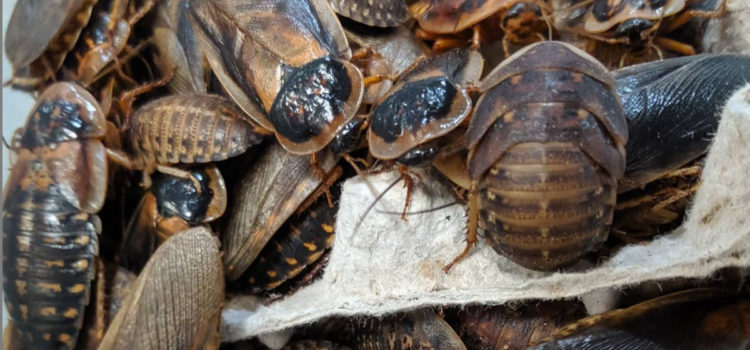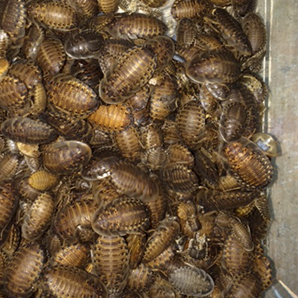
Crickets are abundant and relatively easy to breed. However, they tend to have a horrific smell if you don’t keep their enclosures clean. They have short lifespans and tend to have die offs that contribute to the smell. They are fast, and they jump. They make a lot of noise. They easily escape. They can bite back at your reptiles. Did I mention the smell?
However, they are fairly nutritious and can be a staple feeder for reptiles if you gutload and dust properly with fortified insect chow and Repashy supplements. More importantly, most captive reptiles, as well as arachnids will accept them readily.
Click here for more information on proper supplementation of feeder insects
Dubia roaches, on the other hand, have several benefits over crickets including less chitin (the indigestible bits), more protein, and a better calcium to phosphorus ratio. The main drawback being that most people do not want to keep roaches in their home. A non-flying, non-climbing roach such as B. dubia is a quiet, easy to keep, easy to breed, low odor, non-escaping food source for your reptiles.

Mealworms have high amounts of chitin that are present in these larvae making them harder to digest, they can however be a great part of a varied captive diet. Most ground geckos such as leopard or pictus geckos seem to do well with mealworms as their main, staple feeder.
Silkworms or hornworms could be a good staple feeder if your reptiles accept them. They are high in protein and low in fat, but grow rather large and might be intimidating for small critters. Hornworms also have a good calcium to phosphorus ratio and almost no chitin.

Superworms suffer from a very high amount of phosphorus, so while they have good levels of protein and fats, and a relatively manageable amount of chitin, are inexepensive and plentiful, they make poor staple feeder insects unless very, very heavily supplemented with calcium.
Ringed worms, such as nightcrawlers and red wiggler worms, provide fantastic nutrition with a calcium to phosphorus ratio of 1.5:1 and is an absolute favorite food of box turtles, aquatic turtles, frogs, newts, and salamanders. They make great feeders for reptiles as well, if your pet can get past the texture. Click here for more information on what the calcium to phosphorus ratio is, and how it affects supplementation.
Other so called “worms” are really grubs, and often contain a lot of fat, such as waxworms, or low in protein like phoenix worms, which doesn’t make for a good staple. But can be a good addition to a varied diet.
Butterworms have anecdotally been reported to cause problems with crested geckos and other Rhacodactylus species, either by secreting an acidic substance and burning the skin or through secondary parasites and tend to be high in fat.
Capturing wild insect feeders is not recommended because they may contain parasites, chemical pesticides or other toxic contaminants. Collecting bugs from fields next to highways are also risky because of run-off, herbicides and exhaust. Worms from farms or anywhere near lots of manure are especially likely to carry parasites.
Culturing your own feeders, and feeding off only the second generation helps reduce the risk of pathogens as well.
Seeding your substrate with isopods and springtails means they not only act as cleaner crews in the terrarium, but also may be eaten and add variety to the diet.

